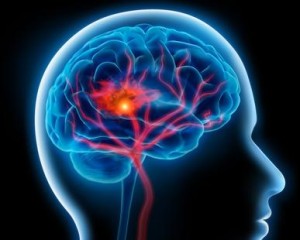 Stroke is the leading cause of disability in the world. It is the second leading cause of dementia, and the third most common cause of death. Stroke has a world incidence of 9.0 million and world prevalence of 30.7 million.
Stroke is the leading cause of disability in the world. It is the second leading cause of dementia, and the third most common cause of death. Stroke has a world incidence of 9.0 million and world prevalence of 30.7 million.A change in the brain – to its neurons and neural systems due to causes including damage as a result of stroke – is called neuroplasticity. One of the proteins studied significantly for its role in neuroplasticity is γ- Aminobutyric acid or GABA. GABA is the primary inhibitory neurotransmitter in the brain and in the entire central nervous system. GABA acts on inhibitory neuron synapses in the brain by binding to specific membrane receptors on the synapses, resulting in a negative change in the membrane potential of the neuron. GABA turns down the neuron’s response thus requiring much more stimulus in order to turn on that neuron. Thus, GABA is an inhibitory protein in neuron signaling which aids in neuroplasticity.
Though GABA and its receptors are studied for their roles in neuroplasticity, the correlation between their changes after stroke and functional recovery is not well understood in human patients. In stroke cases that have a good functional recovery, there is an initial reduction of neural activation on the side of the brain where the stroke occurred (ipsilateral side). Additionally, a subsequent increase of activation exits on the opposite side of the brain to where the stroke happened (contralateral side). However, a sustained increase of activity on the opposite side of the brain of the stroke is correlated with a reduced recovery outcome.
A recent study published by Kim et. al. in the Journal of Neurorehabilitation and Neural Repair examined the mechanism of neuroplasticity during the recovery phase of ischemic stroke by looking at the changes in GABA activity. This was a longitudinal study of 10 human patients, 1 month and 3 months after a stroke and 15 non-patient controls. GABA activity and upper-limb motor function were assessed at both time points and values were compared with age-matched controls.
To determine GABA activity, PET images were used to measure the amount of GABA receptors in the area, and stroke lesion volumes were measured from diffusion-weighted imaging of MRI data using the Analyze software. Further, upper-limb motor function was verified by Fugl-Meyer score system (FMS).
The researchers examined the relationship between GABA receptor availability and the resultant motor recovery after stroke. They found that global GABA activity was decreased 1 month after a stroke and returned to control levels just 3 months after stroke. This finding is in accord with previous findings. However, they also found a strong correlation between this outcome and patients with positive recoveries. The decrease in GABA activity helped to produce a better functional recovery.
This finding lends insight to neuroplasticity, and supports an area of research to create novel therapies to aid in motor recovery after stroke.
Tags: Brain Studies, Stroke AnalyzeDirect
AnalyzeDirect